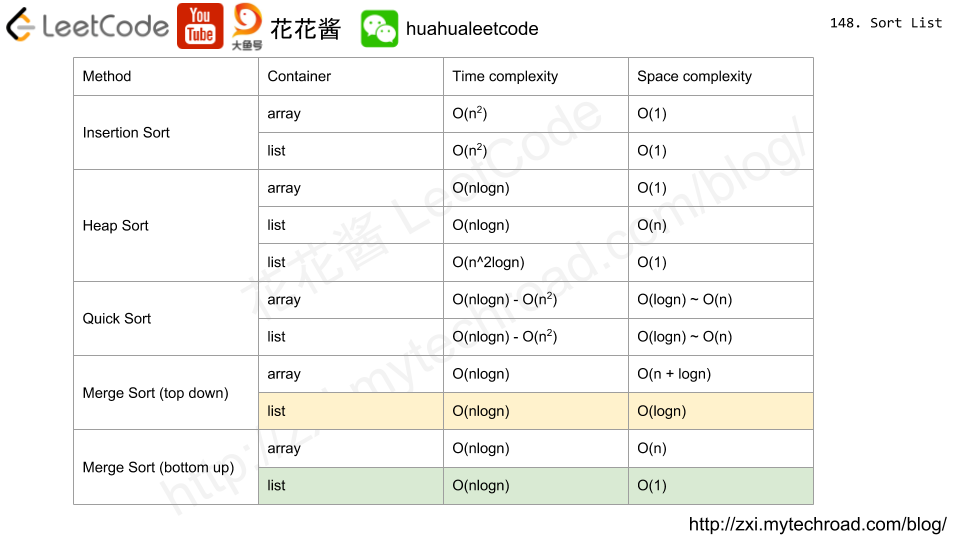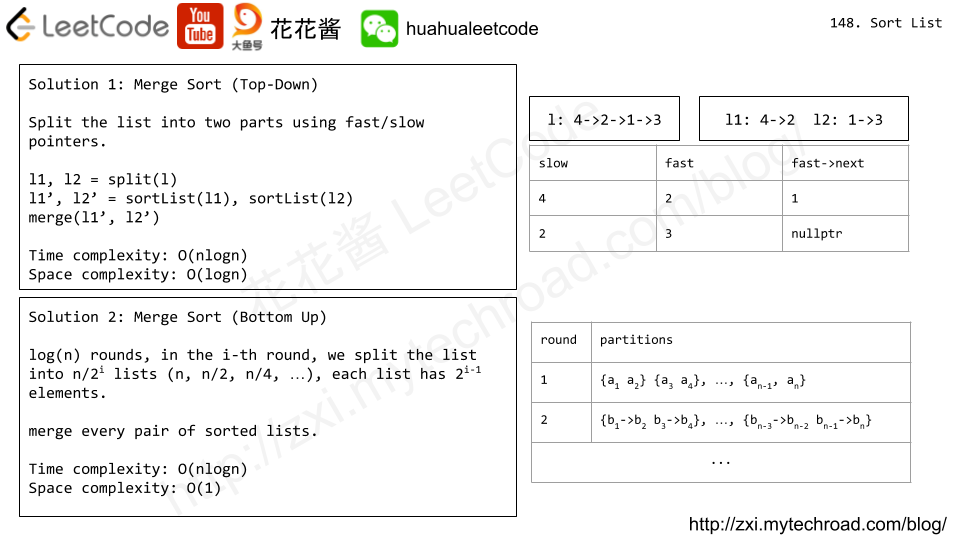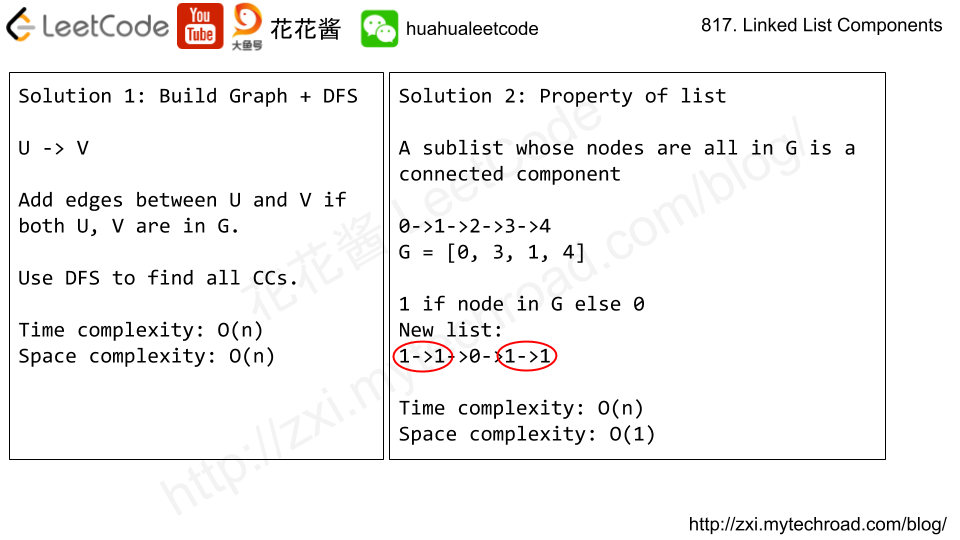Problem
Given a non-empty, singly linked list with head node head, return a middle node of linked list.
If there are two middle nodes, return the second middle node.
Example 1:
Input: [1,2,3,4,5] Output: Node 3 from this list (Serialization: [3,4,5]) The returned node has value 3. (The judge's serialization of this node is [3,4,5]). Note that we returned a ListNode object ans, such that: ans.val = 3, ans.next.val = 4, ans.next.next.val = 5, and ans.next.next.next = NULL.
Example 2:
Input: [1,2,3,4,5,6] Output: Node 4 from this list (Serialization: [4,5,6]) Since the list has two middle nodes with values 3 and 4, we return the second one.
Note:
- The number of nodes in the given list will be between
1and100.
Solution: Slow + Fast Pointers
Time complexity: O(n)
Space complexity: O(1)
|
1 2 3 4 5 6 7 8 9 10 11 12 13 14 15 |
// Author: Huahua // Running time: 0 ms class Solution { public: ListNode* middleNode(ListNode* head) { if (!head || !head->next) return head; auto slow = head; auto fast = head; while (fast && fast->next) { slow = slow->next; fast = fast->next->next; } return slow; } }; |


